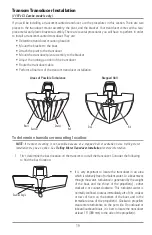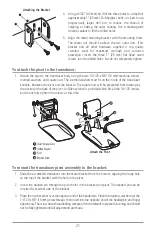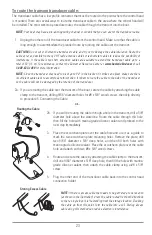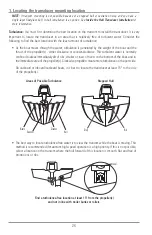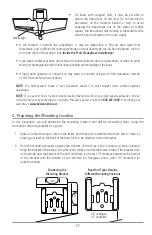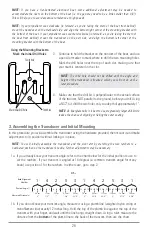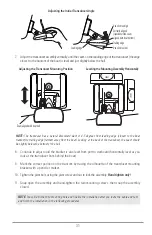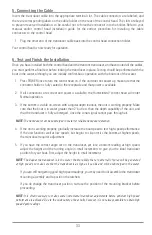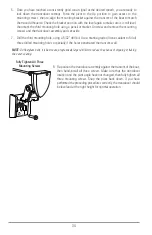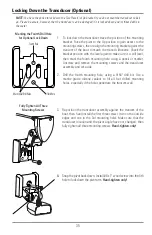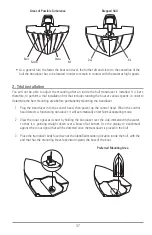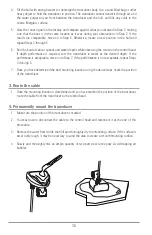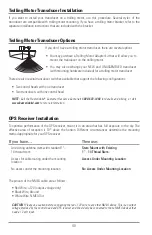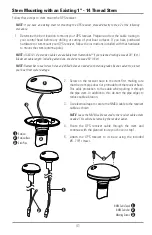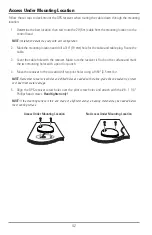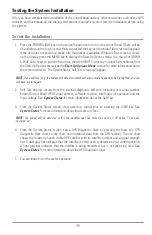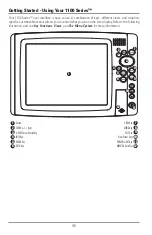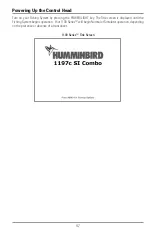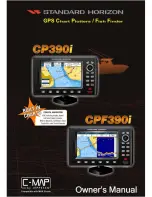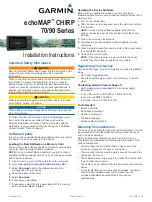
5. Connecting the Cable
Insert the transducer cable into the appropriate terminal slot. The cable connectors are labeled, and
there are corresponding labels on the cable holder on the rear of the control head. The slots are keyed
to prevent reversed installation, so be careful not to force the connector into the holder. Refer to your
manual and/or control head installation guide for the correct procedure for installing the cable
connectors to the control head.
1.
Plug the other end of the transducer cable back into the control head connection holder.
Your control head is now ready for operation.
6. Test and Finish the Installation
Once you have installed both the control head and the transom transducer, and have routed all the cables,
you must perform a final test before locking the transducer in place. Testing should be performed with the
boat in the water, although you can initially confirm basic operation with the boat out of the water.
1.
Press POWER once to turn the control head on. If the unit does not power up, make sure that the
connector holder is fully seated in the receptacle and that power is available.
2.
If all connections are correct and power is available, the Humminbird® control head will enter
Normal operation.
3.
If the bottom is visible on-screen with a digital depth readout, the unit is working properly. Make
sure that the boat is in water greater than 2' but less than the depth capability of the unit, and
that the transducer is fully submerged, since the sonar signal cannot pass through air.
NOTE:
The transducer must be submerged in water for reliable transducer detection.
4.
If the unit is working properly, gradually increase the boat speed to test high-speed performance.
If the unit functions well at low speeds, but begins to skip or miss the bottom at higher speeds,
the transducer requires adjustment.
5.
If you have the correct angle set on the transducer, yet lose a bottom reading at high speed,
adjust the height and the running angle in small increments to give you the ideal transducer
position for your boat. First, adjust the height in small increment.
NOTE:
The deeper the transducer is in the water, the more likely that a rooster tail of spray will be generated
at high speeds, so make sure that the transducer is as high as it can be and still be submerged in the water.
If you are still not getting good high speed readings, you may need to disassemble the transducer
mounting assembly and re-position the ratchets.
If you do change the transducer position, re-trace the position of the mounting bracket before
proceeding.
NOTE:
It is often necessary to make several incremental transducer adjustments before optimum high speed
performance is achieved. Due to the wide variety of boat hulls, however, it is not always possible to obtain high
speed depth readings.
33

